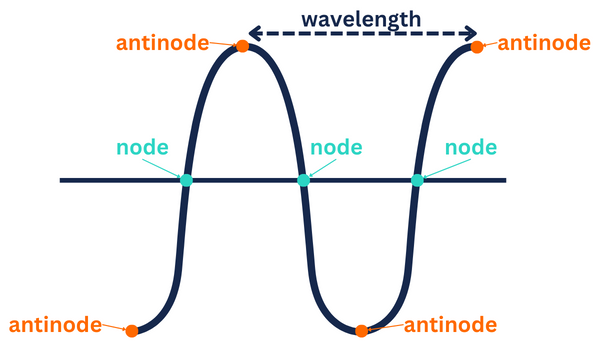By the end of this activity you will:
- have measured the speed of light
- have used your knowledge of waves
- have thought about the relationship between wavelength and frequency
To complete this activity you will need:
- a microwave oven
- a bar of chocolate (about 150 g to 300 g of milk or dark chocolate)
- a microwave-safe plate (this needs to be large enough for the chocolate to lie flat on the plate)
- a ruler
- a copy of the worksheet (digital or printed)

Have a go!
- First, read through the warnings.
- Make sure you have all the things you need from the list above.
- Follow the instructions below.
Warnings:
- Make sure there is only food in the microwave and no metal or foil wrappers!
- Check the guidance on the microwave before using it.
- Unplug the microwave before checking the label on the back.
- Make sure that the rotating turntable in the microwave is free to move so you do not burn out the motor.
- Melted chocolate can be extremely hot. Make sure you do not touch the chocolate until it has cooled down.
Instructions:
- Find the frequency of your microwave. It is usually written on a label stuck to the machine. The units of the power output will be Hz, kHz, MHz or Ghz.
- Convert the power output into Hertz (Hz). 1 kHz = 1000 Hz. 1 MHz = 1,000,000 Hz. 1 GHz = 1,000,000,000 Hz. Write this number down on the worksheet.
- Remove the microwave's turntable plate and its rotating stand (you want to stop the chocolate from turning around).
- Remove the wrapper from the chocolate bar and place the chocolate on the plate. The chocolate should be upside down so that the flat side is facing up.
- Place the plate in the microwave. You might need to use a small upside-down plate or bowl to cover the rotating mechanism.
- Turn the microwave oven on for 10 seconds at a time, until the chocolate just starts to melt (this usually takes about 10-30 seconds but each microwave oven will be different). Make sure you don’t melt all the chocolate.
- Take the chocolate out of the microwave oven and find the 'hot spots' on the chocolate where more melting has taken place. Dabbing the back of a spoon lightly over the chocolate may make it easier to find the soft and hard spots.
- Measure the distance between 2 neighbouring hot spots in centimetres.
- Complete the worksheet.
What's going on?
Light travels as a wave (it sometimes behaves like a particle but for this experiment we don’t need to think about that!). Microwave ovens produce light waves at a microwave wavelength that we cannot see with our eyes. We can only see the optical part of the electromagnetic spectrum.
When a microwave is powered on, it emits microwaves which are reflected back and forth between the walls of the oven. The size of the oven is chosen so that the peaks and troughs of the reflected waves line up with the incoming waves to form a “standing wave”.

Credit: The Schools' Observatory
These standing waves have high and low points of heating (peaks and troughs) which correspond to the nodes and antinodes of the standing wave. At the antinodes, the amplitude of the wave will be at its highest and will melt the chocolate much quicker. This is where the 'hot spots' occurred. The nodes are where the waves cancel each other out so there is little energy to heat the chocolate and it will melt much slower.
By measuring the distance between two hot spots, you measured the distance between two antinodes. That distance is half the wavelength, so by doubling your measurement you found out the wavelength of the microwaves.
